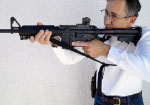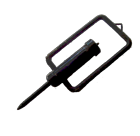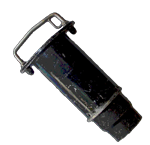Our swat tactics and media interference is not a new subject. Below is an excerpt from an article written for the Loyola Marymount University and Loyola Law School by John Becker, the owner of Aardvark Tactical. Although the article was written in 1995 it is still applicable today and everyone involved with tactical operations and chemical agents should be aware of the issues he discusses. The full article is available by clicking (here).
With the advent of modern technologies such as satellite uplinks and remote camera crews, television has displaced newspapers and radio as the predominant news medium. This shift has enabled the media to bring stories to the public as they happen rather than reporting them the next day.
By sending out a remote camera crew, the news media is now able to report breaking stories live, allowing the public to see first-hand everything from terrorist attacks to natural disasters. Although in the past police could provide reporters with interviews and access after the fact, this is no longer sufficient. The media now aggressively pursues breaking stories and demands complete access to ongoing situations. Although live coverage has led to a well-informed public, it has also created serious problems for law enforcement and in some cases risked the lives of hostages and responding officers.
This Comment will argue that when the media's actions lead to the death or injury of a hostage or police officer, the media should be liable for damages that result, if those damages were the foreseeable consequence of their actions.
Part II of this Comment will explore how newsgathering and broadcasting during Ongoing Criminal Incidents can endanger the lives of hostages and police officers.
Part III will discuss the historical requirements for a negligence cause of action and apply those requirements to the media's activities during Ongoing Criminal Incidents.
Part IV will consider the plausible tort defenses to negligence liability.
Part V will discuss whether the First Amendment will bar the imposition of negligence liability on the media.
Finally, Part VI will propose and discuss a new standard for media liability that would allow compensation for the victims of media negligence, while still protecting the First Amendment rights of the media. Part VI will also discuss how the adoption of such a standard would eliminate many of the problems associated with the current law on media negligence.





